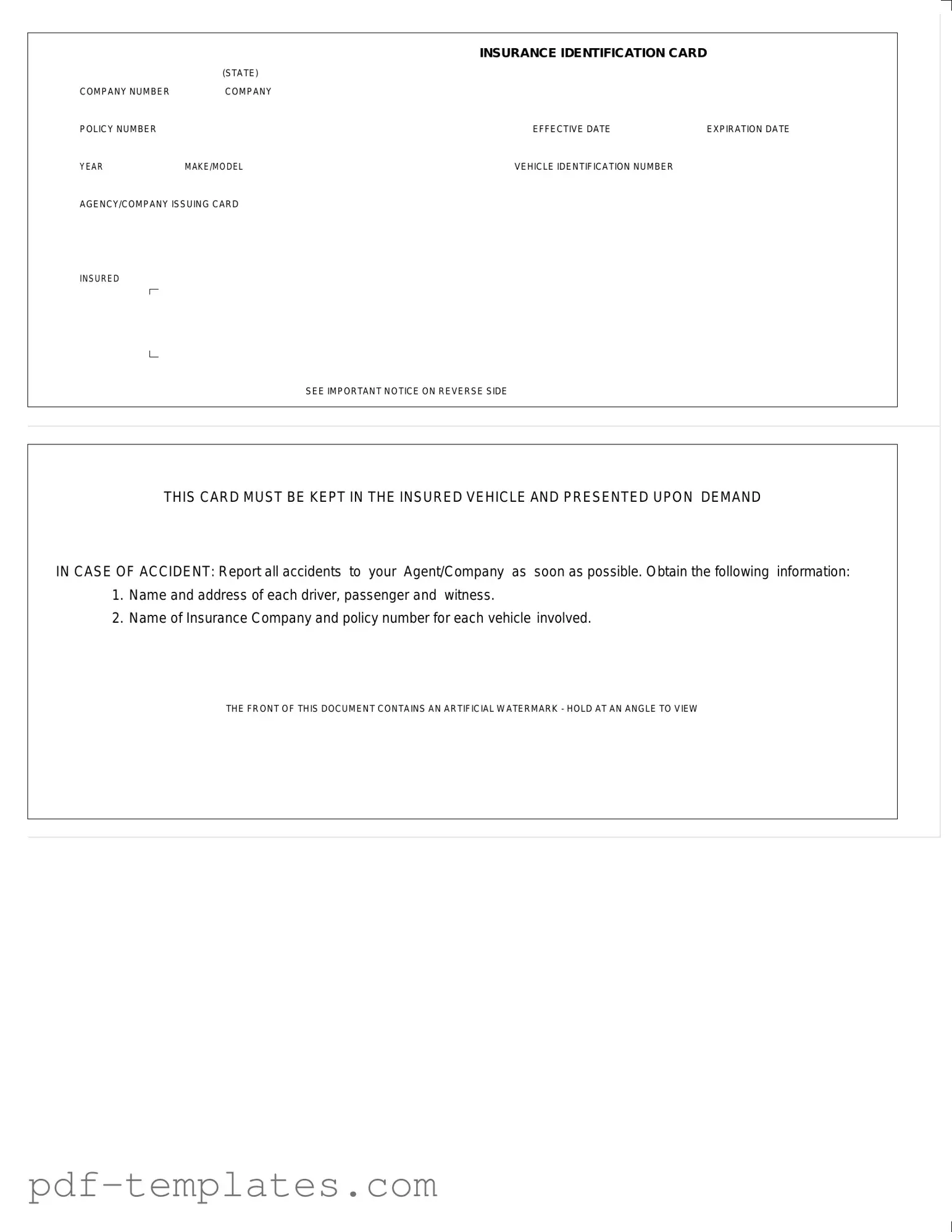The Vehicle Registration Card is a document issued by the Department of Motor Vehicles (DMV) that proves a vehicle is registered for use on public roads. Like the Auto Insurance Card, it contains essential information such as the vehicle identification number (VIN), make, model, and the owner's details. Both documents must be kept in the vehicle and presented when requested by law enforcement or during an accident. They serve as proof of legal compliance for vehicle operation.
The Driver's License is another critical document that shares similarities with the Auto Insurance Card. It identifies the individual authorized to operate a vehicle and includes personal information such as the driver's name, address, and date of birth. Just as the insurance card must be presented during an accident, a driver’s license is also required for identification purposes. Both documents are essential for legal driving and provide a level of accountability.
The Proof of Insurance document, often provided by an insurance company, confirms that a driver has an active auto insurance policy. This document contains similar information to the Auto Insurance Card, including policy numbers and coverage details. While the Auto Insurance Card serves as a quick reference, the Proof of Insurance document is more detailed and can be used for various purposes, such as loan applications or registration renewals.
For those engaging in freelance or contractual work, it is crucial to have legal documents in place, such as the Independent Contractor Agreement form, to define the working relationship, payment terms, and responsibilities clearly, thereby ensuring a professional engagement and protecting the interests of both parties.
The Title of the Vehicle is a legal document that establishes ownership. Like the Auto Insurance Card, it includes the vehicle identification number and the owner's information. Both documents are crucial when selling or transferring ownership of a vehicle. While the insurance card proves that a vehicle is insured, the title proves who owns it, making both documents essential for vehicle transactions.
The Bill of Sale is a document that records the sale of a vehicle. It includes details about the buyer, seller, vehicle, and the sale price. Similar to the Auto Insurance Card, it serves as proof of a transaction and can be required for registration or insurance purposes. Both documents help establish a legal record, ensuring that all parties are protected during the sale process.
The Emissions Certificate is a document that certifies a vehicle meets environmental standards. Like the Auto Insurance Card, it must be presented during vehicle registration and can be required during inspections. Both documents play a role in ensuring compliance with state laws, and having them readily available helps avoid penalties.
The Safety Inspection Certificate is similar to the Auto Insurance Card in that it verifies a vehicle's safety compliance. This document is often required by state law and must be kept in the vehicle. Both the safety inspection and insurance card demonstrate that the vehicle is roadworthy and legally compliant, providing peace of mind for drivers and passengers.
The Lease Agreement for a vehicle outlines the terms under which a vehicle is leased. It includes details about the vehicle, the lessee, and the lease terms. Like the Auto Insurance Card, it is an essential document that must be kept on hand. Both documents ensure that all parties understand their rights and responsibilities regarding the vehicle.
The Roadside Assistance Card is issued by some insurance companies and provides contact information for emergency services. Similar to the Auto Insurance Card, it must be kept in the vehicle and presented when needed. Both documents offer reassurance to drivers, ensuring they have support in case of an emergency while on the road.
